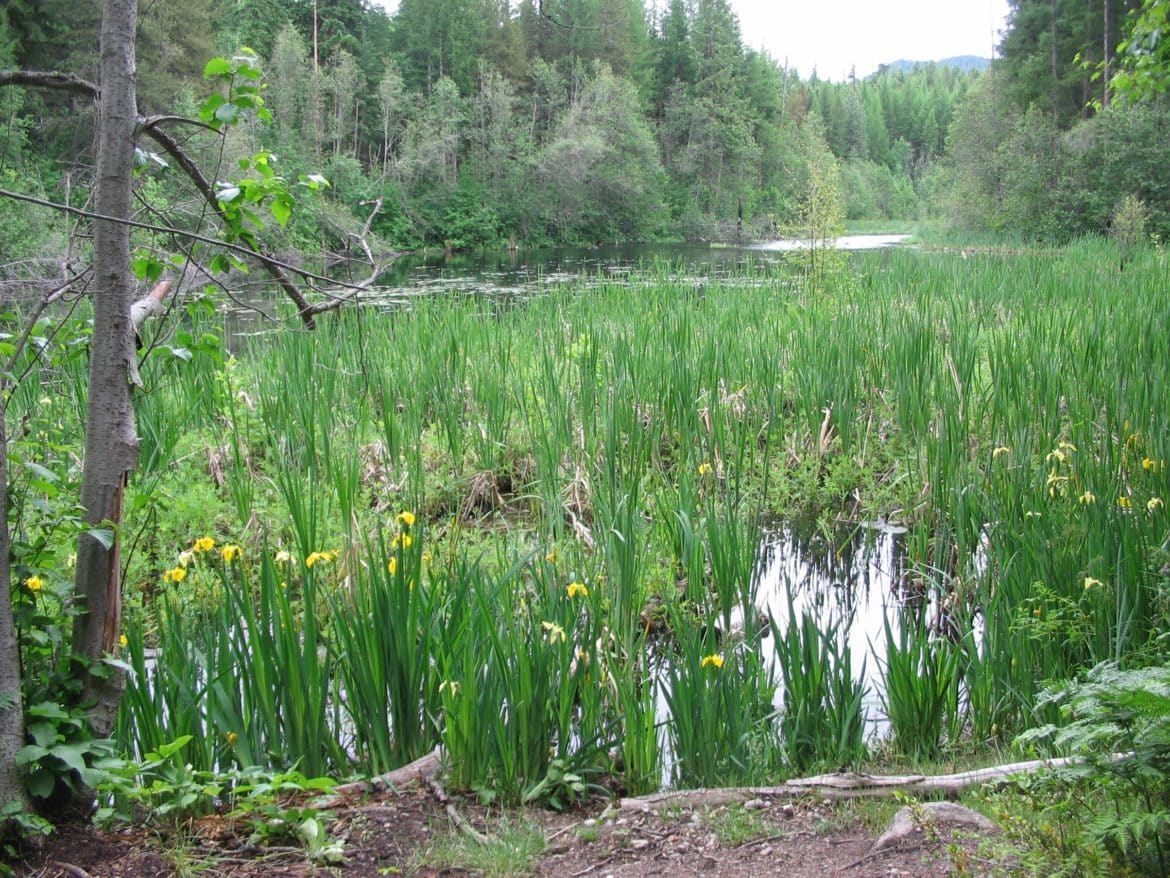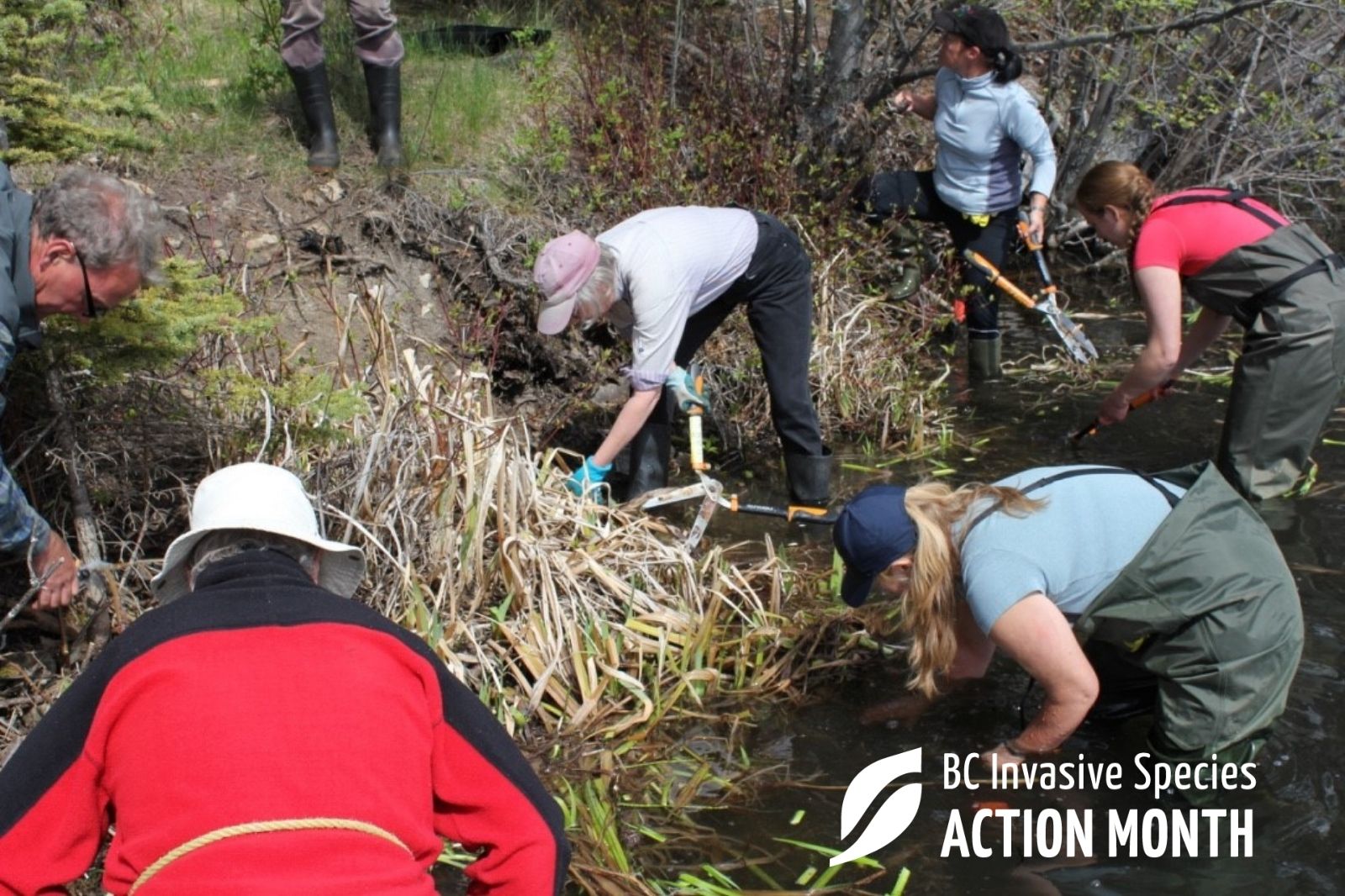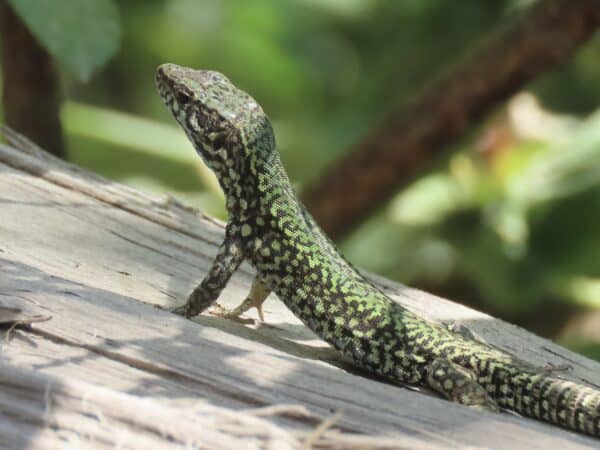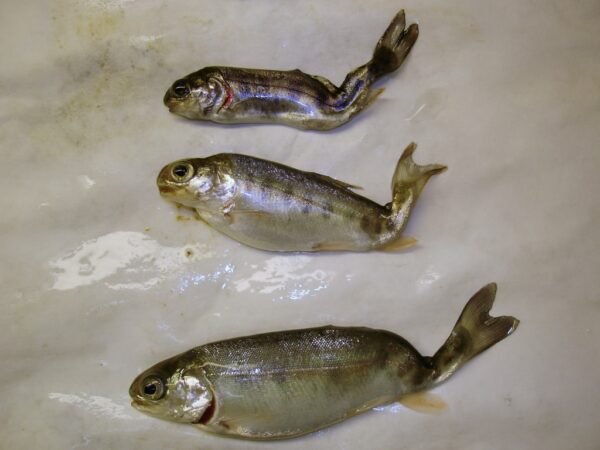Published: May 6, 2021
In recent years, the Cariboo community of Bridge Lake has witnessed the arrival and spread of Yellow flag iris, an attractive but invasive water-based plant. They decided to take action. Here’s their story.
In 2019, a homeowner at Bridge Lake discovered Yellow flag iris growing along the beautiful lakeside. Yellow flag iris is an invasive aquatic plant that takes over wetlands, streams, lake shorelines and shallow ponds. It forms thick mats that damage wildlife habitat, reduce water flow and crowd out native vegetation. Yellow flag iris can be toxic to humans and animals, and cause human skin irritations. This plant reproduces through seed dispersal and its horizontal roots. When pieces of the roots break off, they can form new plants which makes controlling this invasive challenging. Luckily, the homeowner was quick to act and notified the Cariboo Regional District immediately.
The Cariboo Regional District started a collaborative management program which has seen over 45,000 sft of Yellow flag iris being treated and managed by committed staff and volunteers.

Communities Rally to Support on the Ground Efforts
Recognizing the mounting impacts and associated costs with the ongoing spread of this plant, the Bridge Lake Homeowners Association, the Cariboo Regional District, Wildlife Habitat Canada and AgroWest Consulting Scientists collaborated to plan, treat and monitor several key sites around the lake. The first step was getting homeowners on board with treatment at Bridge Lake. Many were very supportive after learning about the damaging effects of aquatic invasive plants, especially on their property.
Catherine Tarasoff, an expert in Yellow flag iris control, was brought in to assess the damage and create a plan to control the spread, with a ‘think outside the box approach’ for invasive species management. The first Yellow Flag Iris Control Workshop, funded through Wildlife Habitat Canada and the Cariboo Regional District, was held at Bridge Lake in 2019.
Bridge Lake isn’t the only community taking on a Yellow flag iris invasion in BC. Ten similar workshops were held across the province that year involving 63 participants. Workshop participants learned how to use the benthic barrier method to control the invasive plant. They then went on to train an additional 123 staff and volunteers and treat a whopping 45,764 sq ft of Yellow flag iris in their communities – all in addition to the efforts of the Bridge Lake community!

“The Bridge Lake workshop is an excellent example of how stewardship groups play an important role in invasive species management. Through the partnership with the Friends of Bridge Lake we were able to collect information about Yellow flag iris infestations, gain access to private landowner property for treatments, and train local residents on treatment and future monitoring. Without the connection to the Friends of Bridge Lake we would have remained blissfully unaware of the few populations of Yellow flag iris. Fortunately, we were able to treat the few small patches of Yellow flag iris before the invader got out of hand.”
Catherine Tarasoff, Agrowest Consulting Scientists
Collaboration Key to Future Success
Now in its third treatment year, and supported by the Habitat Conservation Trust Foundation, ongoing workshops and planning are underway to further engage and collaborate within the community to increase the Yellow flag iris management efforts.
Workshops for land managers, stewardship groups and government agencies are ongoing across BC, providing training on the benthic barrier method to control Yellow flag iris. Workshops are scheduled for 2021 in Duncan, Victoria, Vancouver, Burnaby, Kamloops, Vernon, Clearwater and Williams Lake. If you are interested in hosting a workshop, please contact Catherine.
Share





